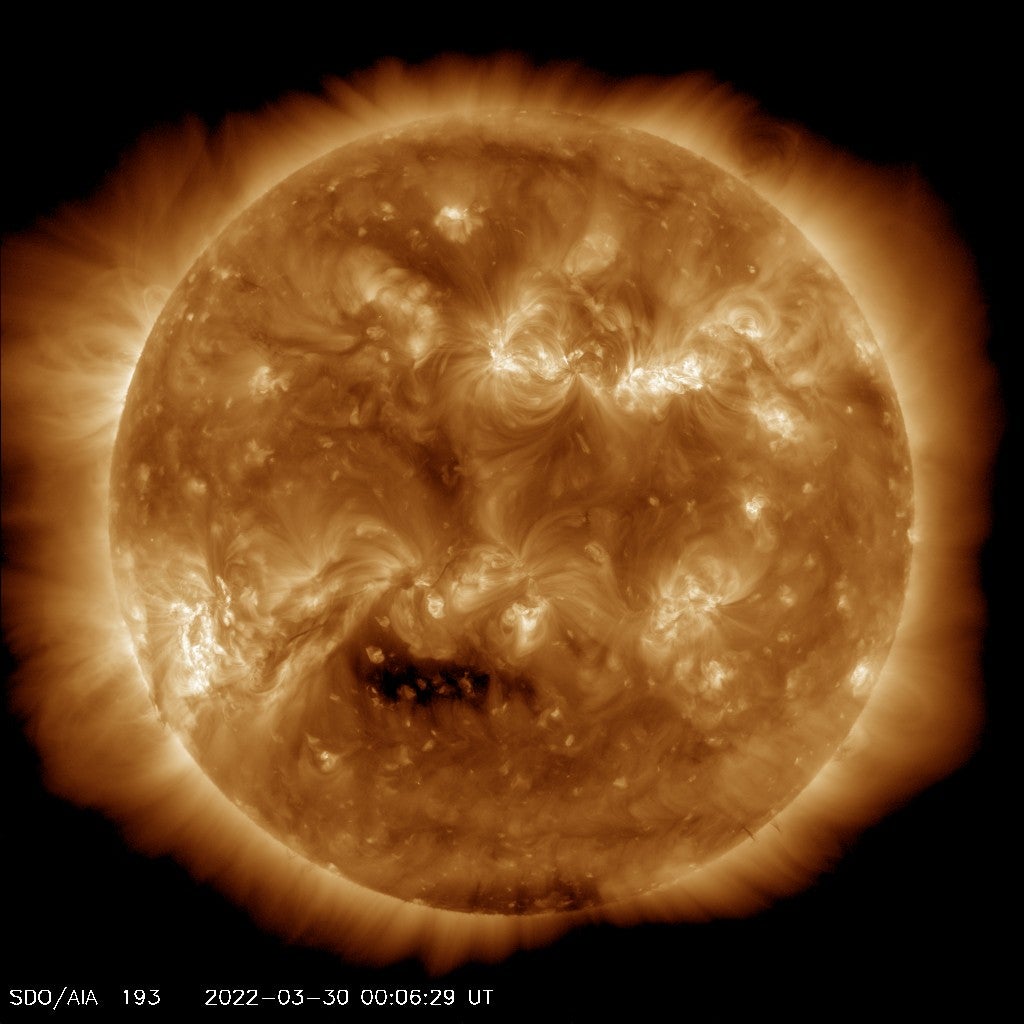Solar storm watch issued after strong solar flare on Wednesday
A Nasa spacecraft captured a strong solar flare Wednesday afternoon, raising the possibility of a geomagnetic storm Thursday

An image of the Sun taken by Nasa’s Solar Dynamics Observatory spacecraft on 30 March
The US National Oceanic and Atmospheric Administration’s Space Weather Prediction Center has issued a geomagnetic storm watch for Thursday, 31 March, after a strong solar flare erupted from the near side of the Sun Wednesday afternoon.
At 5:35 p.m. Wednesday, an X-class flare erupted from a group of sunspots on the northeast region of the Sun relative to Earth and was captured by Nasa’s Solar Dynamics Observatory spacecraft. X-class flares are the most intense class of flare, and the electromagnetic energy released by the flare may have disrupted radio communications on Earth during the afternoon, according to Noaa.
While the energy released by solar flares reaches Earth at the speed of light, Noaa and Nasa observations suggest the flare was associated with a coronal mass ejection from the sun’s upper atmosphere. A coronal mass ejection is a plume of charged particles released from eruptions on the Sun that can take hours to reach the Earth, but can cause geomagnetic storms by transferring their high energy into our planet’s magnetic field.
On 4 February, particles from a coronal mass ejection triggered a geomagnetic storm that swelled the upper atmosphere enough to pull 40 newly launched SpaceX satellites from their orbits.
Noaa’s space weather prediction center issued a watch for a potential G3 class geomagnetic storm for Thursday. G3 is considered a strong storm, while a G2 is moderate and a G1 is a minor storm. The storm that brought down the SpaceX satellites was a G1 geomagnetic storm.
Flares, coronal mass ejections, and associated geomagnetic storms are likely to increase in the coming years, as the solar activity increases toward the peak of a roughly 11 year cycle in 2025.
Subscribe to Independent Premium to bookmark this article
Want to bookmark your favourite articles and stories to read or reference later? Start your Independent Premium subscription today.

Join our commenting forum
Join thought-provoking conversations, follow other Independent readers and see their replies